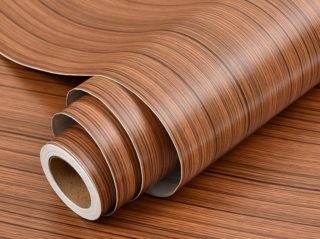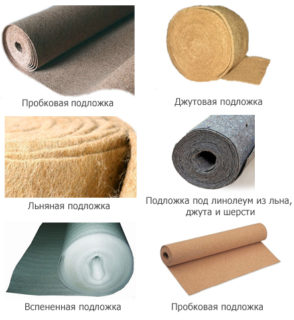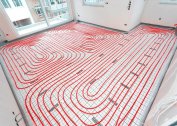Linoleum is the most popular flooring. It is strong, durable, easy to install and maintain, has a huge selection of different colors. However, there is a minus of such a coating - it is not warm. Therefore, in the process of laying, you need insulation for the floor under linoleum.
Materials and technology of insulation
A wide selection of linoleum is available on the flooring market. Its main types:
- Unfounded - a thin coating that requires careful preparation of the floor. The slightest bumps, if not eliminated, will lead to rubbing and tearing of the material. The service life of such a coating is about five years.
- Based on felt or jute coated with a polymer layer. This type of coating has a thickness of up to 5 mm. The base may be natural or artificial. Such material is elastic, soft will retain a sufficient amount of heat. Suitable for dry rooms with low traffic. For example, for bedrooms. The service life, subject to the manufacturer's recommendations, is 8-10 years.
- On a foam basis. It has a thickness of 1.5-3 mm. It retains heat a little and is capable of absorbing sounds. This type of coating is easy to install, because easily cut with a knife and glued in the right places to the base. Often, such a coating has an additional layer - fiberglass, which prevents the formation of dents. The surface is covered with a durable film that extends the life of up to 10-15 years.
Even if the coating with the base has thermal insulation properties, this is not enough. It is required to additionally lay the insulation on the floor.
Properly selected insulation material will help maintain heat in the room, create additional sound insulation, hide the unevenness of the floor. Properly completed installation of all materials will extend the life of any type of linoleum.
Criteria for choosing a heater and types of substrates
When choosing a heater for linoleum, the following parameters must be considered:
- environmental friendliness and safety,
- ease of installation
- vapor permeability
- fire protection,
- resistance to mechanical damage.
To insulate the floor in a private house with a basement or for apartments on the ground floor, you must first select a substrate. It compensates for uneven surfaces, muffles sounds, retains heat. There are several options for natural substrates, they are environmentally friendly and completely safe:
- Cork - pressed small particles of cork tree bark. The material perfectly retains heat and absorbs noise. It is resistant to moisture, soft - it is pleasant to walk on it. Disadvantages: high cost; due to the softness under heavy furniture, the material bends, which leads to deformation of the floor covering. The last drawback can be avoided by choosing a more rigid version of the cork substrate.
- Jute is a natural material consisting of jute fibers. Compressed fibers are impregnated with antifungal and fire retardant agents. Advantages: the material is resistant to the formation of mold, has good heat and sound insulation properties.
The disadvantages include the high price and deformation during prolonged exposure to heavy objects. - Flaxseed consists of natural flax fibers. Like jute, it is treated with fire protection. It also retains heat and absorbs noise. The linen substrate is thinner than jute, so it is less deformed under the influence of furniture. The price is about the same as that of jute.
The combined substrate of jute, linen and wool allows you to combine all the advantages of the components and achieve maximum density of the material. Such a substrate is less prone to deformation, and its cost is lower than the rest.
Types of insulation
It is recommended to insulate the floor with foam or isolon.
Penoplex or extruded polystyrene foam is a heat-insulating material having a porous structure. It is easy to use - the plates are easily cut with an ordinary knife. It has high heat and sound insulating properties. The material is safe and durable.
Isolon or polyethylene foam is not foil and foil. The foil can be on one or on both sides. Such a heater has high vapor and thermal insulation, waterproof, safe, and durable. In addition, the price of the isolon is low.
Another way to insulate the floor under linoleum in an apartment or in a private house is the “warm floor” system. The following types are distinguished:
- water;
- cable;
- infrared.
The best option for a warm floor to be placed under linoleum is infrared. The film system takes up little space. The underfloor heating is laid on a substrate, it is covered with moisture-resistant plywood on top. The flooring follows.
IR film under linoleum on a wooden or concrete floor allows you to maintain a comfortable temperature in an apartment or in a private house. In the same way, you can insulate the balcony.
DIY insulation technology
If you violate the technology of laying a warm floor, the heat will quickly leave the room. To prevent this from happening, you should follow simple rules.
- Before installing linoleum on a wooden floor, it is necessary to prepare the surface. If there are bumps and crevices, thick plywood (8-12 mm) is laid. If the defects are minor and the boards are in good condition, you can do without it.
- For a private house or for an apartment on the ground floor, a substrate is laid on the prepared base. In this case, it is better to choose a more rigid one, so that the installation of heavy furniture does not lead to its deformation.
- Insulation is laid on top of the substrate. The joints of the substrate and insulation should not match. The seams between the sheets are glued with construction tape.
- A vapor barrier film and fiberboard sheets are laid on the insulation layer, which are fixed with self-tapping screws. Another layer of vapor barrier should be put on the fiberboard and only then install linoleum.
It is easy to do the insulation of the floor in a private house, in an apartment or in the country with your own hands. It is important to choose the right materials and follow the instructions.






